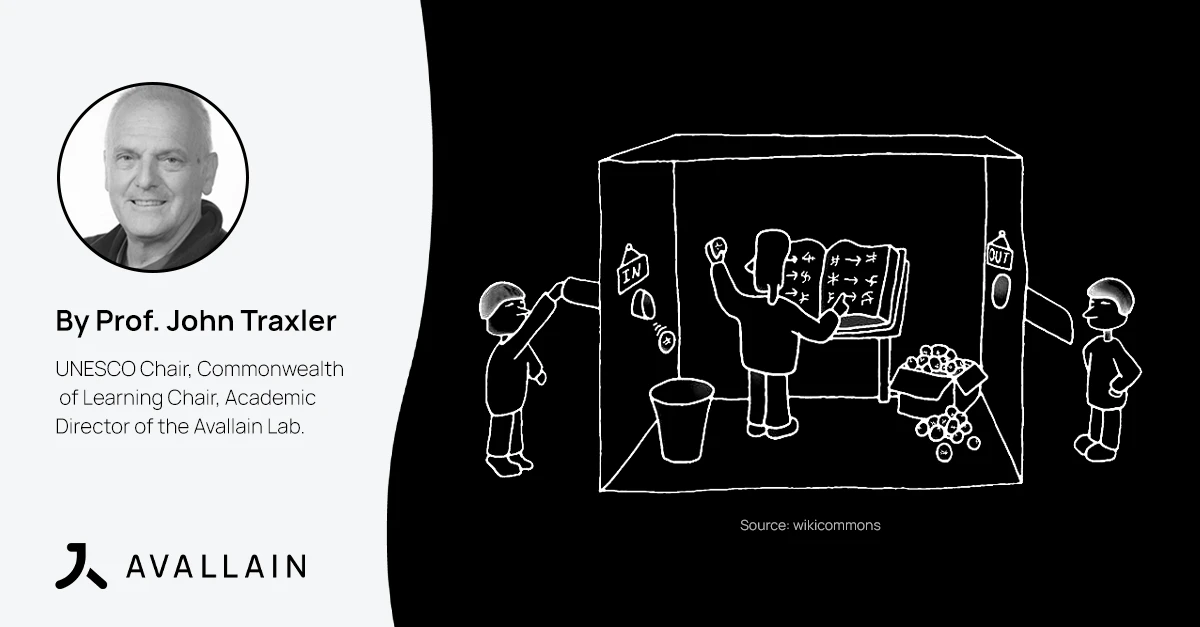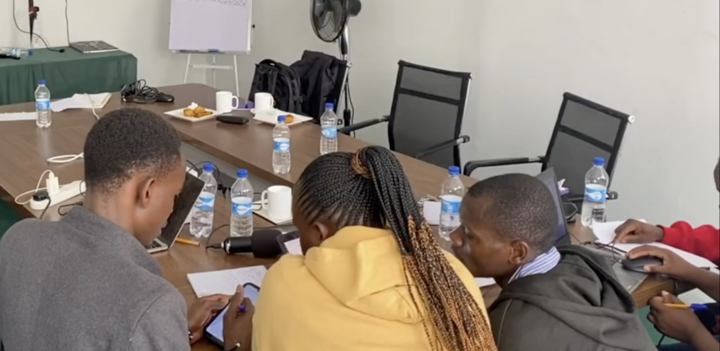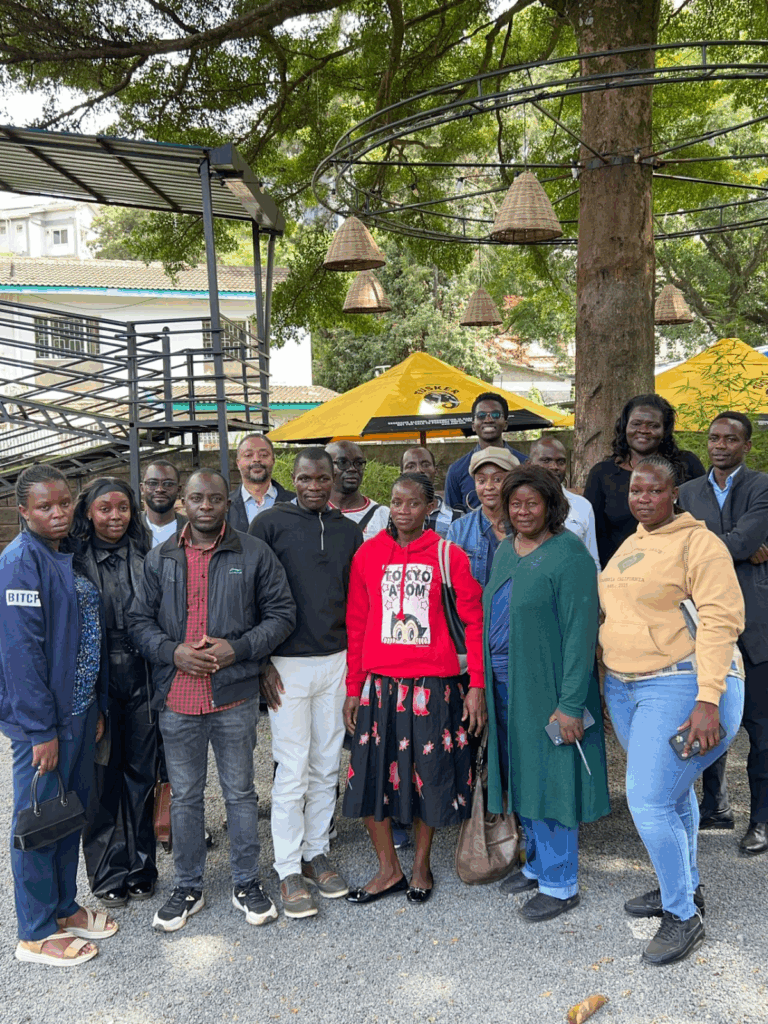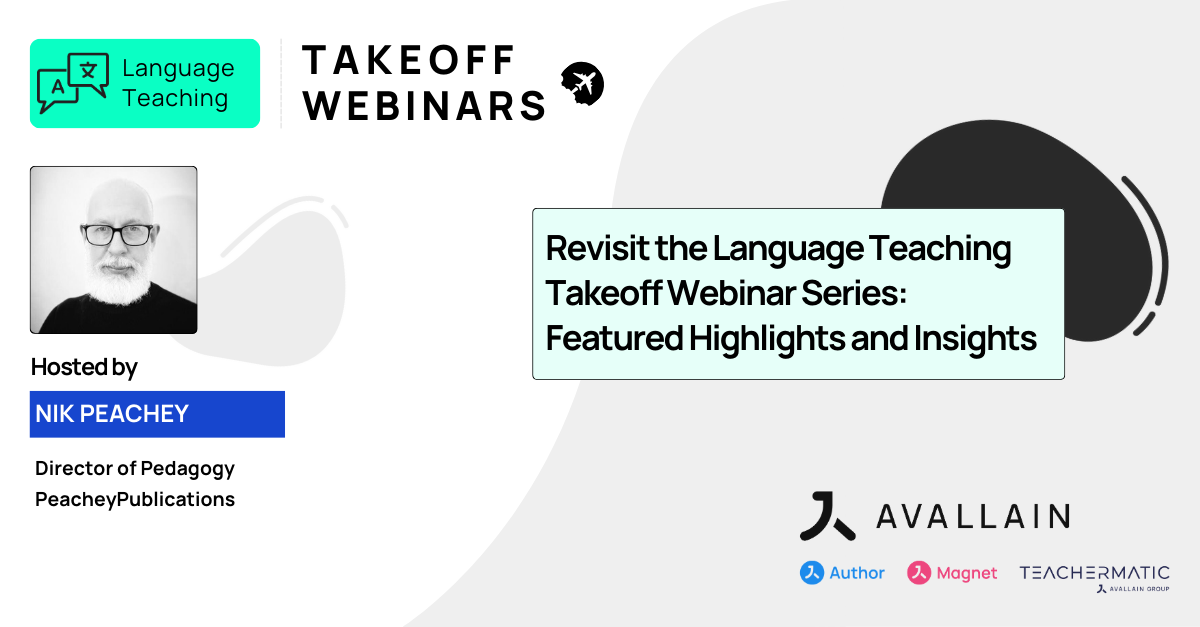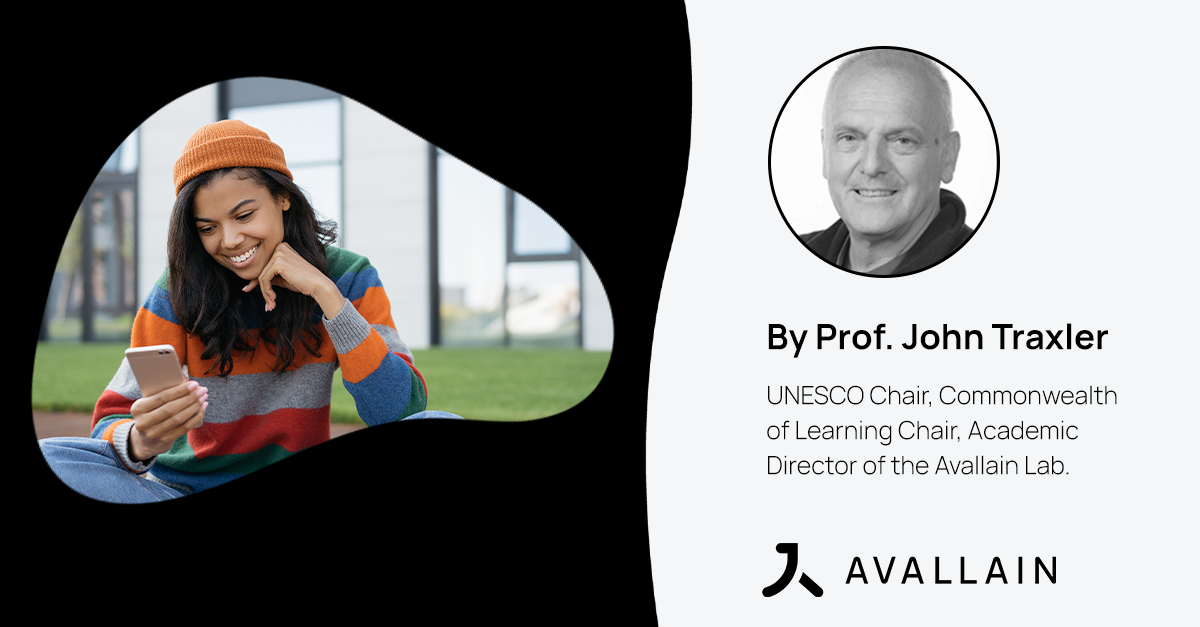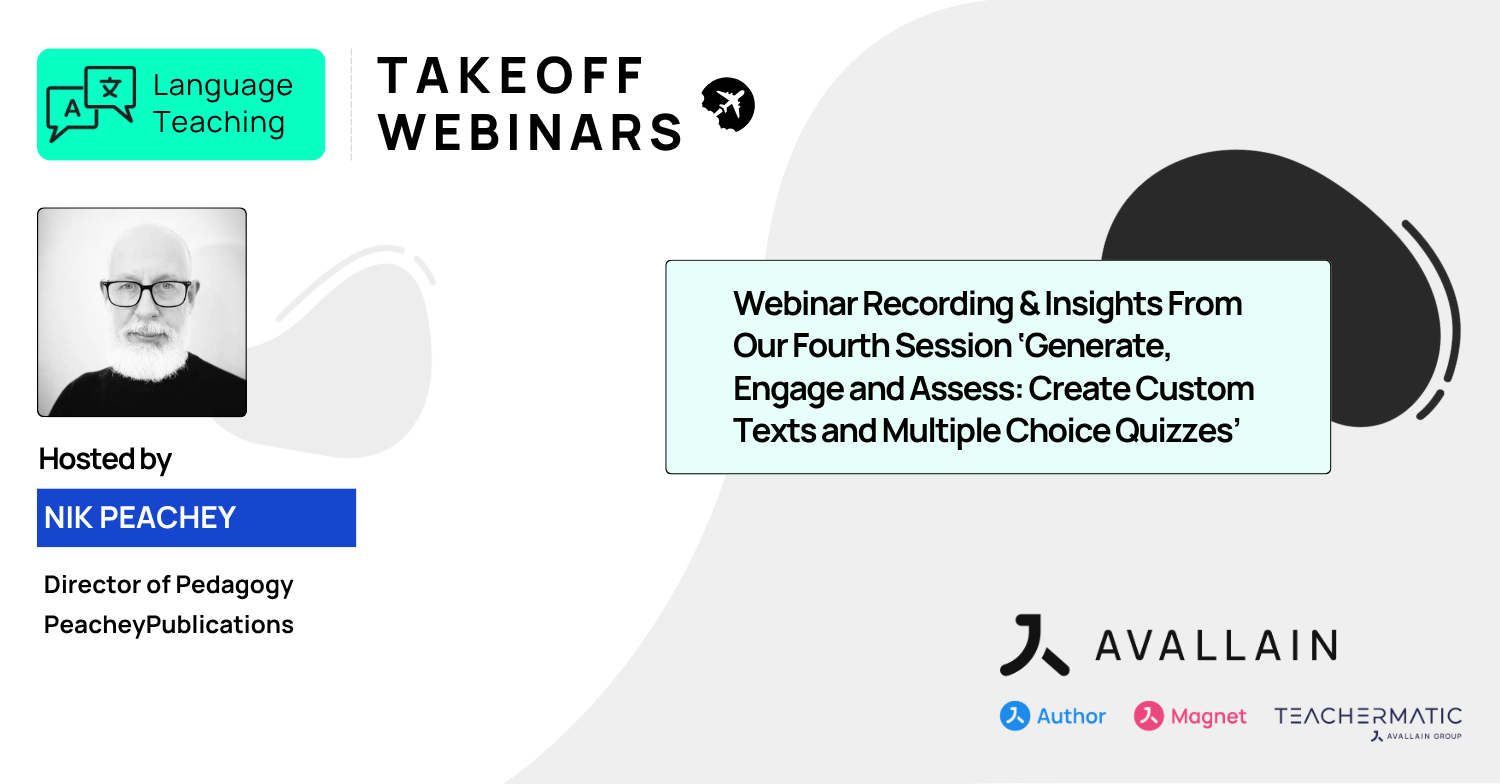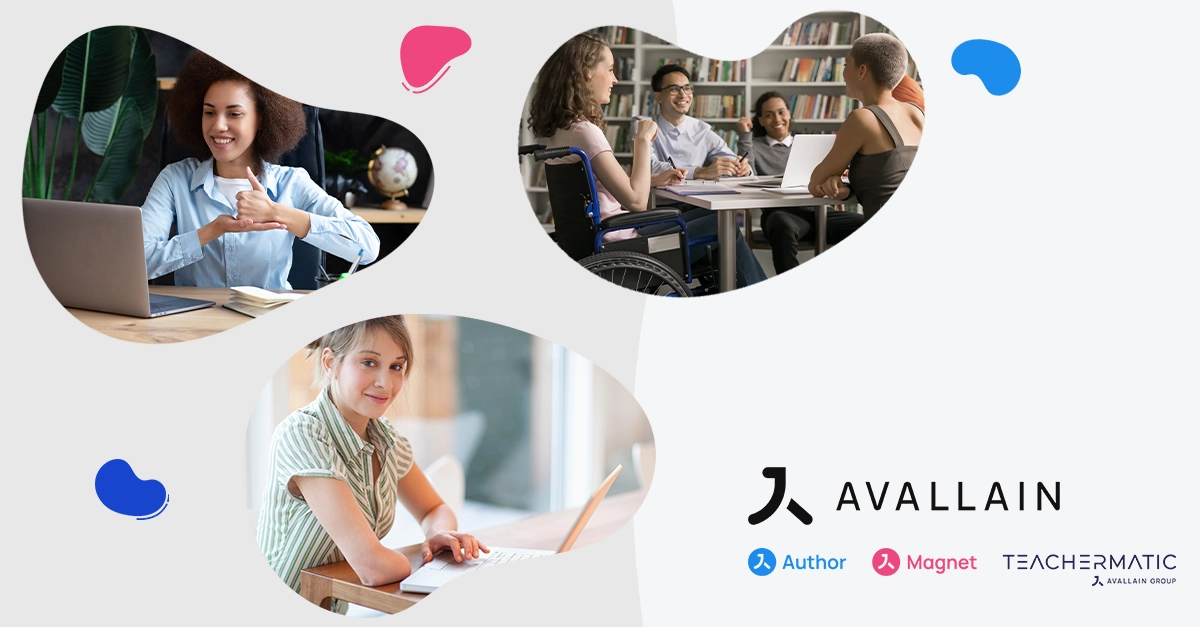Creating meaningful, impactful AI tools relies on collaboration and real-world testing. The ‘AI for Teaching Innovation’ project at the Edinburgh Futures Institute (University of Edinburgh) applies this principle by involving educators, students and learning technologists in the co-design and classroom testing of AI tools. In this interview with Javier Tejera, Senior Learning Technology and Design Advisor, he explains how this approach ensures AI supports authentic learning and teaching.
When Educators Become AI Designers: Inside Edinburgh’s AI for Teaching Innovation Project
An interview with Javier Tejera, Senior Learning Technology and Design Advisor, Edinburgh Futures Institute, University of Edinburgh, conducted by Carles Vidal, MSc in Digital Education, Business Director of Avallain Lab
As part of the Memorandum of Understanding between the Centre for Research in Digital Education (University of Edinburgh) and Avallain AG, signed earlier this year, both institutions are strengthening their collaboration to bridge the worlds of research and industry. The partnership helps the University engage more closely with technological and commercial trends, while supporting Avallain in deepening its research awareness and developing pedagogically rich, ethically grounded learning technologies.
Building on this shared vision, we want to highlight one of the University’s most exciting recent initiatives: the AI for Teaching Innovation project led by Professor Siân Bayne and Javier Tejera from the Edinburgh Futures Institute. Now entering its second phase, the project explores how generative AI can be used to create meaningful, field-specific teaching tools through a co-design process that actively involves professors in defining each app’s scope, refining prompts and, crucially, testing the tools in real educational settings. In its first year, this innovative project delivered ten AI-powered applications across disciplines such as medicine, business administration, law, history and environmental studies.
The results of this initiative are now being presented in different venues and have been unanimously welcomed by educators eager to create meaningful AI tools. At the same time, the project sets an example for edtech companies on how to develop AI apps with genuine value for education.
Interview with Javier Tejera
Javier, at the Edinburgh Futures Institute, you and your team have led the AI for Teaching Innovation project, exploring how generative AI can open new possibilities for teaching and learning. The project supports educators in designing and building AI-driven applications that respond to real pedagogical needs, fostering creative human/machine partnerships and helping academic staff develop confidence and skills in working with AI.
- Let’s start with the origin of the project. What prompted the creation of this project, and what key questions or objectives guided your exploration of generative AI’s role in teaching and learning?
When ChatGPT was released, I asked it a couple of questions about a course I was teaching elsewhere. The responses seemed perfectly fine at first sight, but if I paid close attention, they were quite wrong, frankly. I thought this had potential as a way to prompt students to think critically about a given text, but I thought it wasn’t enough: I also wanted to add specific style, tone, configurations, or, in other words, to have some degree of control over the AI. I was thinking that this could open endless possibilities to be creative in teaching.
This led me to start building small web applications where I could have more control over what the AI generated. As a small pilot, I created a couple of applications that were used in an MBA and an MSc in Heritage here at the University of Edinburgh, and the teachers and students quite liked the experience.
From this point, we launched the AI for Teaching Innovation project, where we co-create web applications for teaching and learning. Our main idea here is to be creative while moving away from the hype and disillusionment of AI and education, and to try to explore and understand collectively whether AI might actually help us to teach or not.
- In your view, what makes this project unique compared to other AI-in-education initiatives happening today?
I think it is our commitment to a collaborative, ground-up approach that actively involves teachers, students and learning technologists in the design and implementation process. Many existing products in the AI and education space are developed in isolation, often far removed from the realities of classroom teaching. As someone who works closely with educators on a day-to-day basis, I have a firsthand understanding of their needs and challenges. I can see clearly that many of the current solutions simply do not resonate with teachers or meet their requirements.
Teachers know very well what will work in their specific contexts. However, it is often difficult (if possible at all) for them to be involved in the design process of educational products. This project tries to bridge that gap. I often see the project as transforming teachers from software consumers into software producers. I think this is the uniqueness of this initiative.

- You involved lecturers closely from the very beginning. How did their participation in the co-design process shape the direction or outcomes of the project?
Their participation is not just an element, but we believe it’s the entire foundation of the project. We have a very structured co-design process. It starts with workshops where we reflect on the ‘Big Ideas’ of AI and education while also providing a hands-on space to sketch ideas using UX design activities. From there, the ideas selected go to the next phase, where we have learning design clinics and discovery meetings to polish the ideas before the build.
What the project team does is facilitate this whole process, but the ideas come from the teachers. When an app is ready, they are its best ambassadors because of the sense of ownership created from the very beginning.
They come up with ideas we genuinely hadn’t thought about. Now, thanks to them, we have new tools and application patterns that we can adapt to other courses. This participation highly influences the direction of the project, but I would even argue that it is the direction of the project itself.
- The examples you developed, such as simulated stakeholder interviews or clinical case scenarios, seem both creative and practical. Could you share more about the value these tools bring to the classroom and how educators and students have responded to them?
Take the ‘Entrepreneurial Personas’ app, for example, which was co-designed with the Business School and used in an MBA course. It’s designed to help students practice B2C and B2B market research. Students come in with their own business ideas, and the tool helps them challenge those ideas, refine their concepts and discover potential new product features that would be useful for their target market (which they can also customise).
This was the first application created, and it was fascinating to see that students were obviously learning about business and entrepreneurship, but they were also actively learning about the possibilities and limitations of using AI in a real-world business context.
It sparked a much richer conversation that covered not only the topics being taught but also the technology itself. We see this ‘dual’ learning (subject matter expertise and AI) in all the apps. Based on the initial survey data we are gathering, students like the experience. Many report that they start feeling a bit sceptical, but then they end up quite enjoying it. And in this line, if there is one common piece of feedback across all the apps, it’s the teachers mentioning that students are highly engaged during the learning experience.
- You’ve managed to deliver ten tailor-made, highly specific AI applications in a remarkably short time. Could you tell us more about the development framework and workflow that made this possible?
Speed and flexibility during development are essential due to our limited resources, so we decided to use React for all project applications, ensuring they are quite modular. Each app sits on a set of shared components: conversation modules, feedback areas, saved interactions, scenario branching and so on. This modularity allowed us to rapidly swap features in and out, tailoring each application to what the teachers want.
Interestingly, all the apps cover very specific use cases, but we are experiencing the ‘paradox of specificity’ where the more closely we tailor, the more widely applicable the core patterns become. Also, we deliberately avoided time-consuming tasks during the build, for example, ‘LLM benchmarking’ because our competitive advantage isn’t in shaving a few percentage points off model accuracy, but in leveraging the learning design and subject-matter expertise provided by the teachers. The real value is the workflow, not the technology: teachers bring domain and teaching expertise, we bring the scaffolding for rapid iteration and deployment while combining it with learning design and a creative but critical approach to AI.
- From a pedagogical perspective, what does the project tell us about the ways AI can meaningfully contribute to improving teaching and learning practices, rather than simply replicating or automating existing ones?
This is a crucial distinction, and it’s at the heart of our project. If you look at the current landscape, most AI-in-education products are based on productivity and efficiency. They’re designed to (supposedly) help teachers grade faster, plan faster, speed up admin tasks, etc. This is not pedagogy really; they don’t fundamentally change the learning experience.
We’re moving away from the efficiency-first mindset and asking, ‘How can this technology foster teaching creativity?’ or ‘How can it help us to teach differently?’ This is where we think AI gets exciting. It’s not just about replicating or making a task faster; it’s about exploring forms of active, exploratory, fun, engaging learning. The project shows that when teachers lead the design, they ask for tools that help their students think critically, practice complex skills and engage with the content in a deeper way.
- This project seems to challenge the traditional ‘top-down’ model of educational technology development. What are the advantages of an academic-led innovation process?
In the usual procurement model, educators tend to be left out of key decisions and become mere software consumers. Even when teachers are consulted, they rarely get a real say in what gets built or how it works. Choices are limited, and their expertise doesn’t reach the design stage. With this project, we deliberately flipped this situation. Here, educators are brought in from the outset, shaping the actual product design. The advantage is obvious: the tools reflect real, lived classroom needs, not generic assumptions. Academic-led innovation means faculty don’t have to compromise with solutions built for and by somebody else. They co-create resources that fit their teaching, their students and their pedagogy and values. This kind of direct involvement brings more enthusiasm and ownership, encourages creative risk-taking and creates new ideas that most commercial vendors miss entirely. Ultimately, the result is technology that feels genuinely created for education by educators themselves.
- The AI for Teaching Innovation project has a strong emphasis on educational research. What are the initial results showing? And what other specific research proposals can we expect?
It’s still early, so data collection is starting now, but the initial feedback is promising. Anecdotally, we have teachers reporting that students have better results on the assessment, feeling more comfortable, confident and clear about what is expected from them. But I want to highlight that we are just as interested in the qualitative elements. We’re looking closely at how the experience is perceived by both students and staff. Those elements are just as critical as quantitative data.
We see this project as a ramp-up for educational innovation and research. It’s not just one single research project; it opens the door to many different angles of research. Because each application is so closely connected to a specific field, we’re seeing the teachers themselves take the lead. They are already showing these ideas at conferences and are planning to write papers for their particular disciplines, applying these pedagogical findings in medicine, business, environmental studies, law, etc. The project’s research output won’t be a single paper from the core team; it will be a collection of discipline-specific studies led by the educators who conceptualise and use the apps.
- Looking ahead, do you imagine this collaborative model of AI app creation evolving in universities and the wider edtech sector?
Indeed, and I think we need more! I certainly believe that teachers have endless ideas for educational products, but they don’t have the space or opportunities to bring them to life. They know what their students actually need. So, risking an over-generalisation here, I think there is a disconnect between teaching contexts and the edtech sector.
On one side, you have educators with deep subject-matter expertise and on-the-ground pedagogical knowledge; they aren’t developers, nor should they be, as their job is to teach and research within their fields. On the other side, you have the edtech sector, which possesses the technical expertise, development resources and infrastructure to build and scale products, but many of the brilliant, context-specific ideas teachers have don’t reach their design teams.
So, I truly think that fostering more collaboration can unlock a wealth of creativity that the edtech sector has largely left untapped, and it would be fantastic to move in that direction more seriously as a sector.
- Finally, on a more personal note, what has this experience taught you about the future of human/AI collaboration in education, and what message would you share with educators who are just starting to explore AI in their teaching?
My message to educators would be quite simple: start playing around with AI, but do it critically. It’s easy to be overwhelmed. We are all swimming in a sea of hype, flooded with blanket statements and grand promises about how AI will ‘fix’ or ‘revolutionise’ education. This hype can push people into two camps: uncritical adoption or total rejection. I don’t think either is very helpful.
For me, being critical is not about rejecting the technology. It means getting your hands dirty and trying things while asking nuanced and difficult questions: Who built this, and what are their values? What is their design context and intended purpose? Does it actually work in my specific context? When they say ‘it works,’ what evidence are they using?
This critical engagement is how we move forward responsibly. It’s how we, as an educational community, get to shape this technology towards better futures for education, rather than just accepting the future that is simply sold to us. So, my advice is to be curious, be cautious and be the one who decides what ‘good’ looks like.

Javier Tejera is a Senior Learning Technology and Design Advisor at the Edinburgh Futures Institute (University of Edinburgh) and also works independently as a digital education consultant. On the one hand, he is interested in innovative, cutting-edge digital technologies for teaching and learning. On the other hand, he is fascinated by low-tech, mobile-first settings and the social contexts in which education operates.
In his role at the University of Edinburgh, he co-leads the AI for Teaching Innovation project together with Professor Siân Bayne. They support and enable teaching innovation through Generative AI by providing course teams with learning design and software development support to build web applications for live teaching.
As a consultant, Javier is currently involved in digital education projects aimed at rural school teachers in Peru and Bolivia. He has previously supported universities in Tanzania, Kenya, Uganda and Nigeria in their transition to digital education.
Javier is a self-taught web developer and holds a BSc (Hons) in Psychopedagogy and an MA in International Development from the University of Santiago de Compostela (Spain), as well as an MSc in Digital Education with Distinction from the University of Edinburgh.
Email: Javier.Tejera@ed.ac.uk
About the CRDE at the University of Edinburgh
The Centre for Research in Digital Education is part of the University of Edinburgh, based in the Edinburgh Futures Institute and the Moray House School of Education and Sport. It does research, teaching and knowledge exchange in areas relating to digital education including policy, practice, artificial intelligence and education futures.
We work with many partner universities as well as policymakers, the cultural heritage sector, schools and other public and private sector organisations. Our partners value us for our critical approach to learning, teaching and technology in formal and informal education, and for the ways in which we combine our research with world-leading practice in digital education.
Find out more at de.ed.ac.uk
About Avallain
For more than two decades, Avallain has enabled publishers, institutions and educators to create and deliver world-class digital education products and programmes. Our award-winning solutions include Avallain Author, an AI-powered authoring tool, Avallain Magnet, a peerless LMS with integrated AI, and TeacherMatic, a ready-to-use AI toolkit created for and refined by educators.
Our technology meets the highest standards with accessibility and human-centred design at its core. Through Avallain Intelligence, our framework for the responsible use of AI in education, we empower our clients to unlock AI’s full potential, applied ethically and safely. Avallain is ISO/IEC 27001:2022 and SOC 2 Type 2 certified and a participant in the United Nations Global Compact.
Find out more at avallain.com
_
Contact:
Daniel Seuling
VP Client Relations & Marketing



